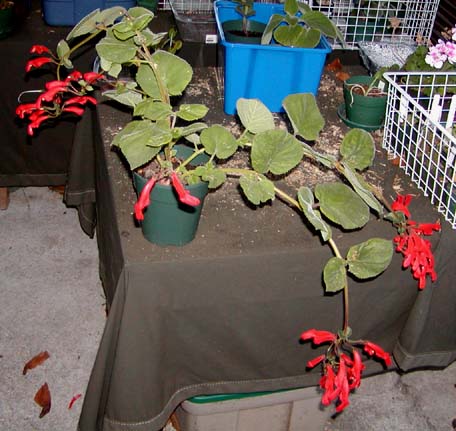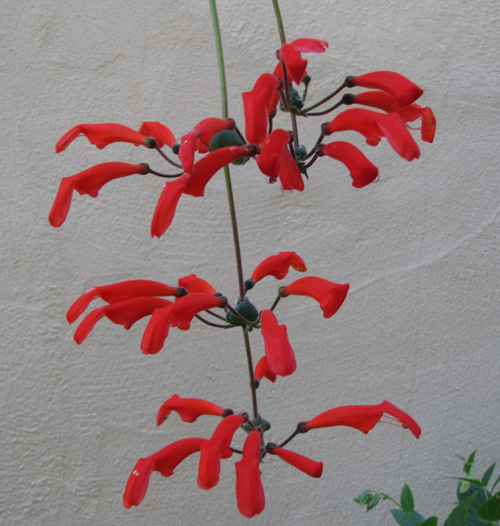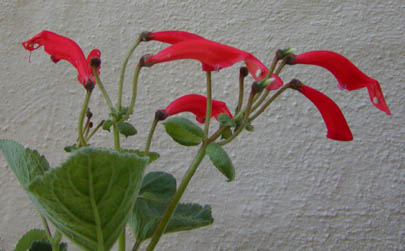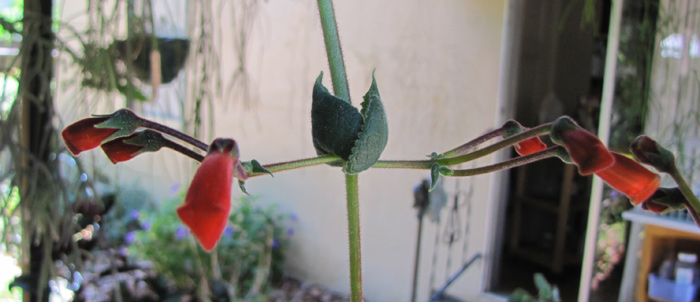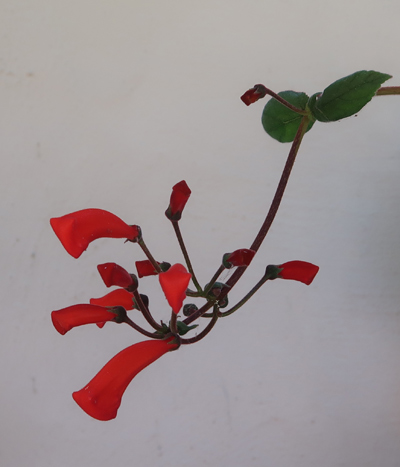Sinningia cooperi
The Sinningia That Thinks It's A Columnea
This species is epiphytic -- that is, it grows in the notches along tree branches and trunks where organic material accumulates. The stems sprawl along the branches or hang from them.
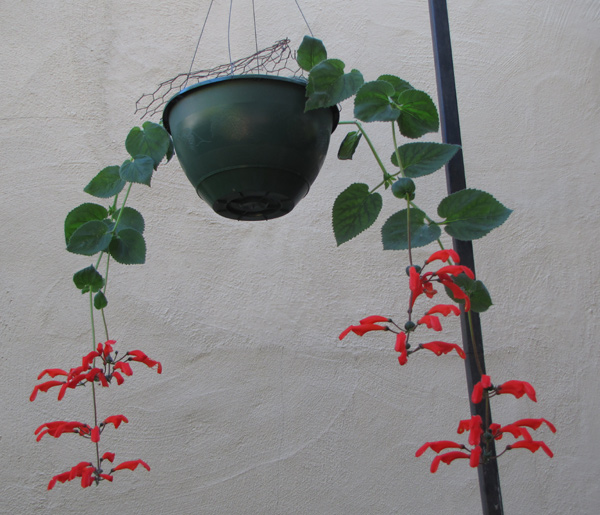
In 2011, I experimented with growing it in a hanging basket. I have been pleased with the results.
Previously I grew it in a regular pot. The plant in the picture below had bunches of flowers but was difficult to display.
